20 Years & None the Wiser? The Phoenix Fire Department’s meticulous recovery process following the Southwest Supermarket Fire changed the way we prevent & manage mayday events. Have those hard-earned lessons been forgotten?
March 11, 202520 Years & None the Wiser?
The Phoenix Fire Department’s meticulous recovery process following the Southwest Supermarket Fire changed the way we prevent & manage mayday events. Have those hard-earned lessons been forgotten?
Plus: What role does fire research play as we move forward?
By Chris Stewart
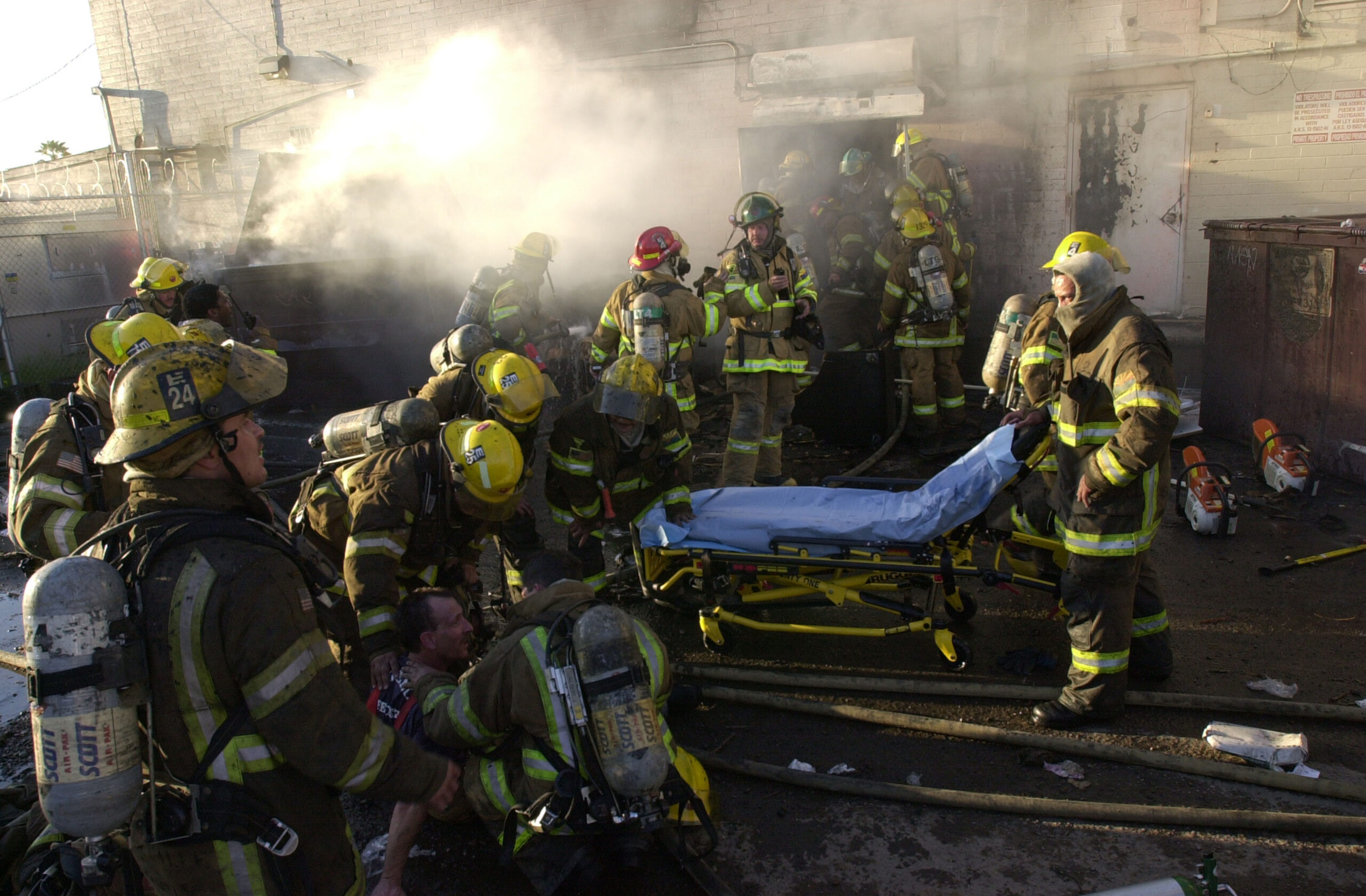
Recently, as the 20th Anniversary of the Southwest Supermarket Fire approached, I reflected on the incident with Glendale (Ariz.) Fire Chief Terry Garrison. Terry is a longtime buddy and mentor, and we are currently teaching command strategies in our local community college system. Our analysis had an elevated sense of gravity, as Terry was the senior advisor for the incident command team that day in 2001. Reviewing the internal Phoenix Fire Department report and discussing the critical lessons learned sparked an on-the-fly evaluation of our operational effectiveness at these types of incidents today and a compelling conversation about what we have learned since this heartbreaking event.
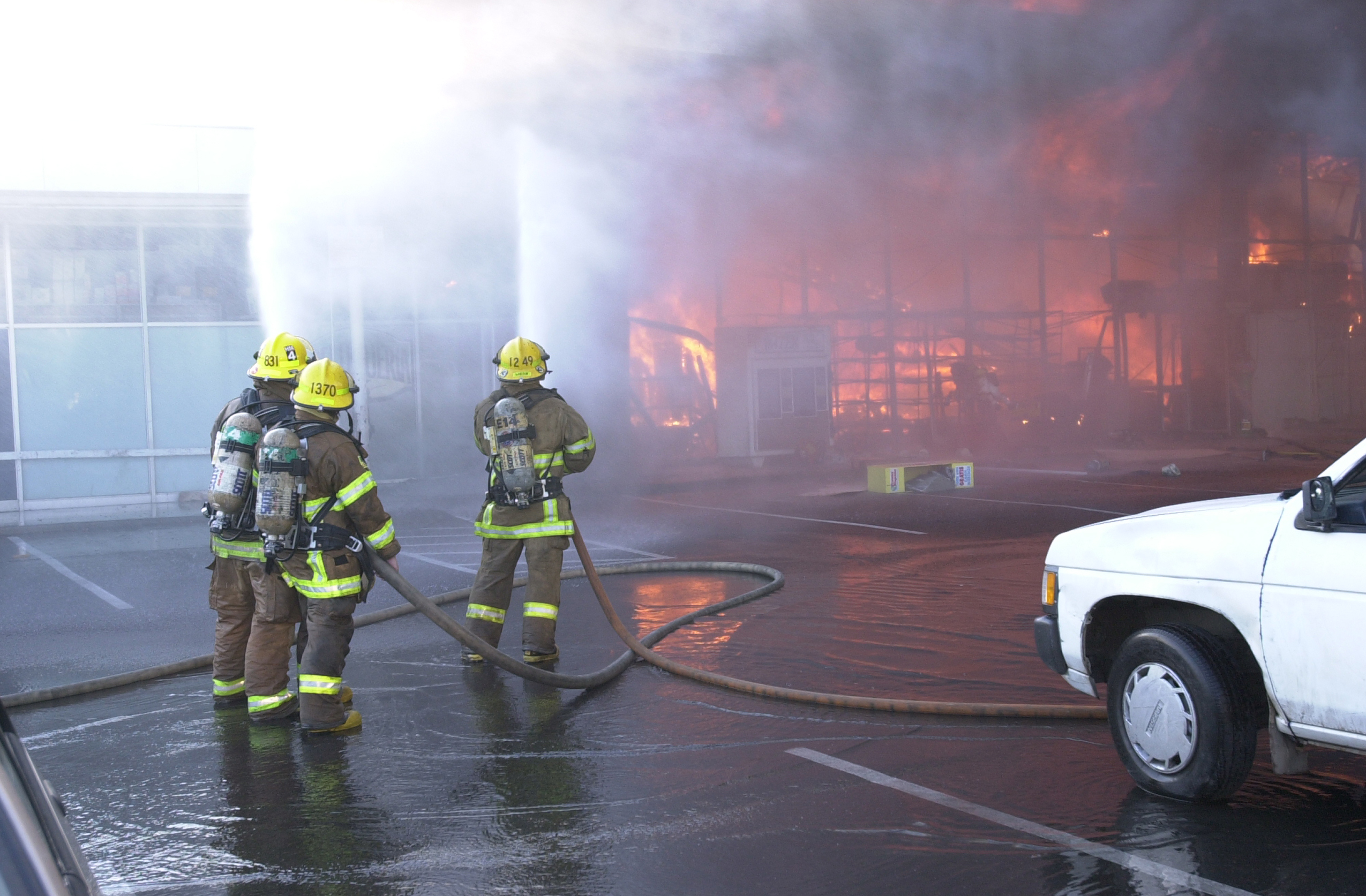
The fire had extended into the truss loft of the structure’s storage area & the attic space above the storefront.
Within two weeks of our conversation, two local fire incidents—one including a mayday—left me reeling. Both events involved large commercial buildings where crews performed in ways that made it obvious the lessons learned from the Southwest Supermarket Fire had largely been forgotten. Crews engaged in dangerous fireground tactics similar to those we saw in 2001, despite the benefit of history and its lessons. It seemed as if no one recognized the potential dangers.
This isn’t surprising. A few years ago, while teaching firefighting tactics and strategy in our college system, I asked the roughly 100 students (all Phoenix firefighters) how many of them were either on the job in 2001 or recalled the department’s post-incident response to the Southwest Supermarket Fire. No one raised their hand. This incident, which shook my organizational generation to its core, did not elicit the same visceral response in younger members. To these future company officers, the event was merely a story from a prior time. Most current members don’t have an emotional and psychological connection to the incident and its aftermath; therefore, they don’t have the same drive not to repeat it. Notably, there are only two (out of 65) remaining command officers in the PFD who were chief officers the day the Southwest Supermarket Fire occurred.
This incident still matters greatly for the safety of our firefighters. However, the lessons learned are perishable if we don’t discuss them regularly with those who lack an emotional connection to the event. My generation of firefighters (some of us now command and company officers) must ensure everything we learned that day remains a part of our organizational consciousness.
Equally important is applying what we now know about modern fire behavior to this incident and determining what still holds water today. What have we learned since March 14, 2001, that impacts our effectiveness and safety? How has fire service research, such as Project Mayday, reinforced these lessons and informed Mayday prevention and response?
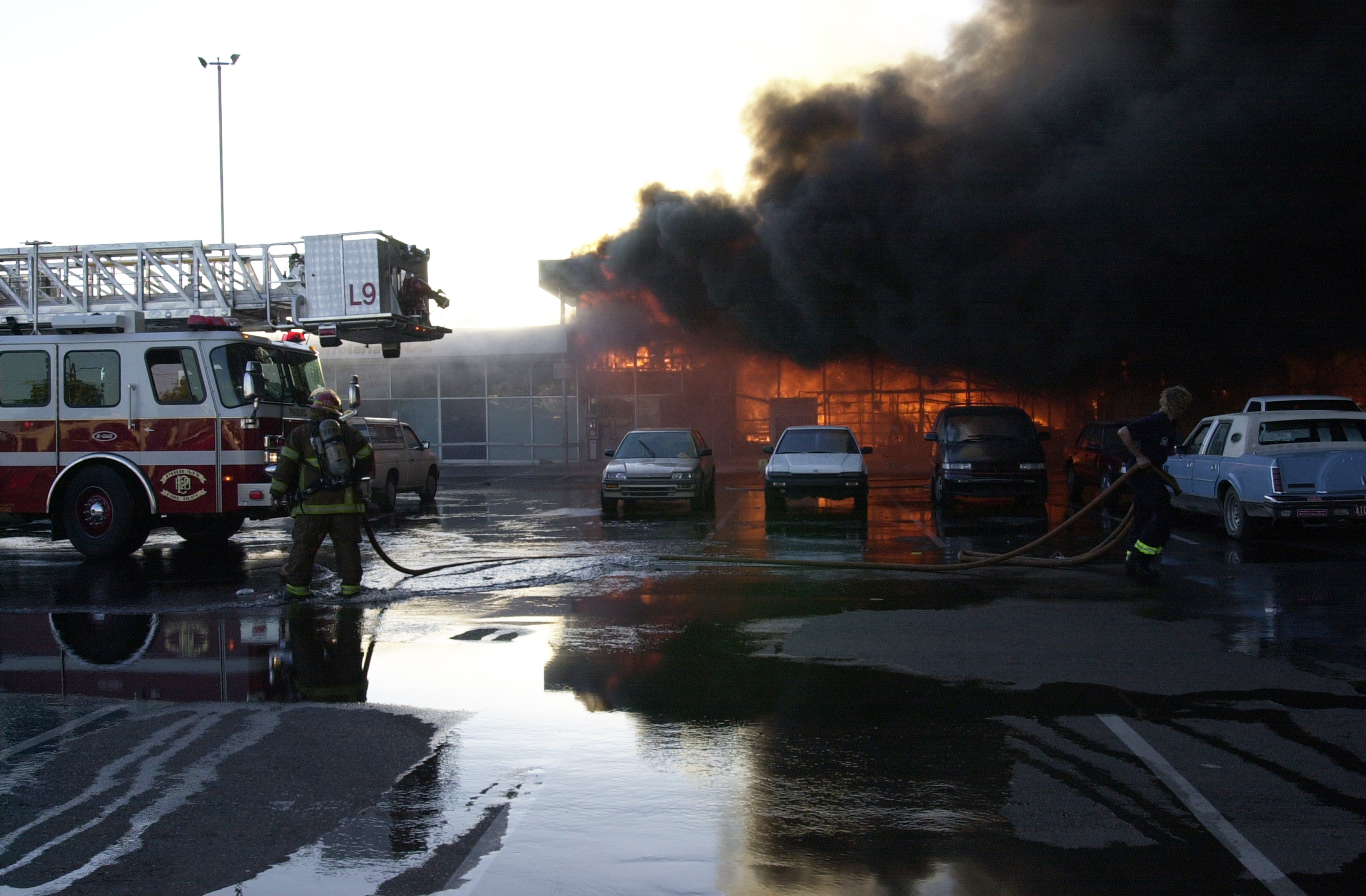
Interior conditions deteriorated from reasonably clear with light smoke…to zero visibility throughout the entire store.
Southwest Supermarket Incident Synopsis
Late on the afternoon of March 14, 2001, the PFD dispatched a single engine company to an exterior fire on the rear loading dock of the Southwest Supermarket. The grocery store was a longtime community staple on W. McDowell Road, operating roughly the same way since 1958. Typically, crews responded to uneventful trash fires at this location; this incident turned severe quickly.
It was a warm spring afternoon with sustained winds above 10 mph from the southwest. The fire had been intentionally started in cardboard stacked against the store’s exterior wall on the windward side. The first-due engine company was returning from the maintenance shop, so the second-due engine company received the dispatch. It arrived on the scene 6 minutes after the alarm. By then, the exterior fire had developed significantly and was visible from quite a distance. The smoke column caught the eyes of the first-due battalion chief and the first-due engine company as they returned to quarters. They jumped the incident and responded along with an additional engine company.
It was a warm spring afternoon with sustained winds above 10 mph from the southwest. The fire had been intentionally started in cardboard stacked against the store’s exterior wall on the windward side. The first-due engine company was returning from the maintenance shop, so the second-due engine company received the dispatch. It arrived on the scene 6 minutes after the alarm. By then, the exterior fire had developed significantly and was visible from quite a distance. The smoke column caught the eyes of the first-due battalion chief and the first-due engine company as they returned to quarters. They jumped the incident and responded along with an additional engine company.
The fire had extended into the truss loft of the structure’s storage area and the attic space above the storefront. As the initial-arriving engine company hit the exterior fire, Engines 14 and 3 entered the front entrance to evacuate occupants and check for fire extension. For the next 25 minutes, interior conditions deteriorated from reasonably clear with light smoke at the high ceilings to zero visibility throughout the entire store. Fire companies had to fight for their lives to get out of the building.
In the end, this incident required five alarms, resulted in 12 maydays—including one firefighter death and multiple firefighter injuries—and left the entire organization scarred. The fire chief immediately began seeking ways to keep this from happening again. Firefighter Bret Tarver’s death inspired a nationwide reflection on how we do business.
Defining the Way Forward
In what was called The Recovery, the PFD began examining the incident’s details and identifying the changes necessary to make the department safer and more effective. The fire chief was clear: PFD would evaluate everything thoroughly and be as transparent as possible. Initially, amateur and professional risk managers met this plan with fear and trepidation, emphasizing potential liability. Should the PFD expose its shortcomings? But in so many ways, this was the bravest thing any fire chief (or department) has ever done.
The PFD published its internal report 363 days after the incident, before the NIOSH LODD and other formal external investigative reports. The department’s analysis documented what it was going to accomplish and how.
After the report’s publication, the real work began. The internal authors, a well-organized labor/management group, defined the steps forward, which included determining how to prevent and respond to similar incidents in the future. Many of these steps forward were best guesses—untested ideas to improve the mayday prevention and response. The Recovery allowed us to test and evaluate these hypotheses. When completed, we had trained with 269 fire companies and 1,140 firefighters, performed more than 300 Mayday training evolutions, and compiled a comprehensive set of data for situations that resembled the Southwest Supermarket Fire. We engaged partners with the skills and experience to determine what we needed to measure and how to achieve those goals. (No firehouse accountants were used in this process.)
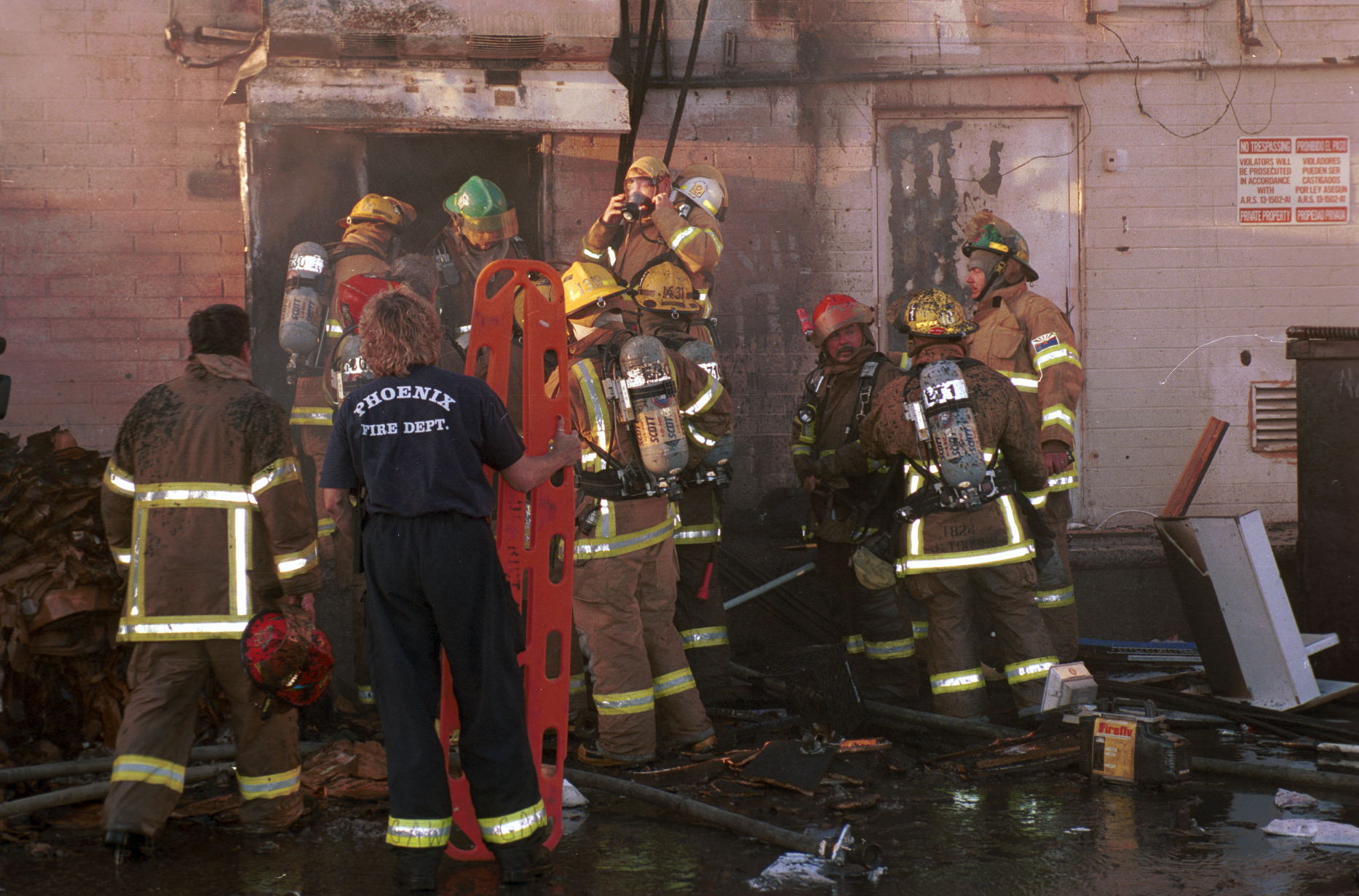
Of the 12 rescuers, 1 in 5 (20 percent) had their own mayday.
Practical applications during the drills revealed that some items documented in the internal report were unreasonable and ineffective. Ultimately, the company officers and firefighters drove the greatest operational breakthroughs. They defined what worked and what didn’t. PFD leadership and the recovery team were humble enough to listen to feedback and build procedures around effective solutions.
The following prevention-focused tenets spurred the development of new department processes:
- Basic understanding of effective fire attack is critical.
- A hoseline is essential to one’s ability to exit a fire building.
- SCBA air is critical to survival.
- Time is consistently a challenge during fire operations.
- Effective tactics make firefighters safer.
- Residential tactics in a commercial building are dangerous.
- Residential incident command practices at commercial fires are ineffective and dangerous.
- Effective firefighting and good decision-making are directly tied to mayday prevention.
- The only way to guarantee survival in a mayday is not to have one.
- On average, it took 12 firefighters to rescue a single firefighter in a mayday situation.
- Of the 12 rescuers, 1 in 5 (20 percent) had their own mayday.
- On average, it took 21 minutes to locate and rescue a firefighter experiencing a mayday.
What We Know Now
Reviewing the “Conclusions/Random Thoughts” section of the internal PFD report shed some light on what we got right and what we now know to be different. For example, the specific recommendations regarding fire size vs. gpm aligned with what is known and still taught today. However, our understanding of ventilation has changed dramatically. Research makes us better. We can now apply the latest fire-science research to the Southwest Supermarket incident to deepen our understanding of similar events.
The following section highlights some of the most profound scientific and empirical revelations since 2001’s Southwest Supermarket Fire.
Fire Behavior
Today, a thorough understanding of fire behavior, which transcends the strategic, tactical and task levels, offers the best chance of preventing similar incidents. The scope of fire behavior includes: fire and smoke conditions; air flow in relation to the pressure inside fire buildings; how wind affects air movement and pressure inside fire buildings; and how coordinating fire attack and ventilation improves firefighter safety and outcomes for the community.
An effective size-up is the best first step; it allows us to assess and identify critical fireground factors. Understanding smoke and fire conditions, including their extent and impact on the structure, enables firefighters to take the most effective actions. For example, a thorough size-up directly determines where crews will launch the initial attack. If the fire started on the exterior, then the fire attack should begin outside and move to the interior.
The most effective fire attacks put a deliberate volume of water in the right places for an appropriate duration. A fire attack that starts with less than 250 gpm in a large commercial occupancy is inadequate. We can’t control every fire; some are beyond our capability. However, we must initiate fire attacks using tactics that support our best chance at success. As many smart folks have been teaching, “If you engage in a fair fight on the fireground, your tactics suck.”
We must coordinate fire attack and ventilation to implement properly sequenced fireground actions. On initial arrival at commercial fires, we typically experience ventilation-limited interior conditions; the Southwest Supermarket incident was no exception once the fire had extended into the structure. We understand that extinguishment, when possible, is best achieved with ventilation-limited conditions, as opposed to free-burning fire conditions. Initiating fire attack as early as possible, from the most advantageous position and with a purposeful volume of water, gives us our best shot at suppression. Aggressively backing up the initial attack with the appropriate volume of water, checking for lateral spread, and considering the best ventilation options complete our solid operational plan.
The most effective fire attacks put a deliberate volume of water in the right places for an appropriate duration.
Ventilation without an effective fire attack makes conditions worse. It introduces additional air flow into the fire compartment, which creates a tunneling effect through the smoke and thermal layers toward the exhaust opening, and ultimately increases the heat-release rate through fire growth. It is also true that creating additional ventilation in a ventilation-limited fire creates more heat and smoke. It does not improve our ability to operate from interior positions, and it does not improve conditions for any potential victims. However, ventilation can remove super-heated gasses and toxic smoke when timed immediately after an effective fire attack when interior fire conditions are improving.
Current research has also revised our knowledge of wind-driven fires. The Southwest Supermarket Fire started on the windward side of the building on a warm, windy spring day. The wind moved fire extension into the building’s spaces. Ultimately, when the interior fire attack proved ineffective, interior conditions became deadly. In 2001, our trained response was to vent the roof’s structure and remove the front windows to improve interior conditions and make rescue easier. Those actions did the exact opposite, as confirmed by recent UL-FSRI research. Wind magnifies the reaction to the ventilation. The increase in the number and size of exhaust openings improved wind-driven air flow, triggering flashover in the main portion of the grocery store and allowing it to burn freely.
Today, we also know we must conduct fire attacks with the wind at our backs in windy conditions. In a commercial setting, attacking a fire against the wind is dangerous and futile. Water and fire streams do not push fire. Air will always move from high pressure to low pressure. If our fire streams entrain enough air to over-pressurize a compartment, it can change the direction of the super-heated air flow, but that is not the same as pushing fire. Our most effective option is an appropriately sized and supported fire attack from the windward side, maybe even from the burned side.
Life Safety & Commercial Buildings
Life safety had always been our No. 1 tactical priority. Today, we know that regardless of fire or compartment size, the best way to support life safety is to put water on the fire. Sometimes, we have the water power to control the fire; other times, we do not. Even if we have credible reasons to believe human lives are at risk in a commercial fire building, we must focus on effective fire attack. Extensive searches in deteriorating conditions are ineffective and deadly; only a targeted search is reasonable. Life safety will benefit more from fire control than from dangerous, fruitless searching. In commercial firefighting, as the fire conditions go, so goes the potential for survivable space.
Fireground Command
The Southwest Supermarket Fire taught us as much about fire command at commercial fires as it did task-level operations. The Blue Card system of utilizing a command team to manage the fireground is critical. Each position plays a valuable role in maintaining the strategic decision-making process, incident action plan, accountability, and preparation for fireground changes.
For example, the most effective person to manage a mayday effort is the tactical-level boss assigned to that sector. They and their support officer (FIT, BSO, ISO, etc.) are intimately aware of their location’s conditions and resources and are in the best position to develop a plan. The IC should reinforce that plan with necessary resources, support surrounding sectors, and communicate overall conditions. Ultimately, the IC and command team will be the final decision-makers regarding when crews should discontinue rescue efforts based on conditions, time and risk level. The Southwest Supermarket incident taught us that mayday management at the strategic level is critical to supporting rescue efforts by the tactical-level boss. We also learned the IC is responsible for supporting the mayday’s adjacent geographical or functional sectors and maintaining the environment as long as possible to execute the rescue.
In addition, we realized maydays have a natural help order. The incident command system should support that help order rather than change it or compete with it (i.e., the IC shouldn’t overwhelm or overtalk mayday management processes).
Each of these command practices has been reinforced through practical application and analysis of maydays. For example, Project Mayday has revealed that firefighters and companies working near the mayday firefighter resolved 89 percent of all maydays in the past 5 years; exterior crews resolved only 11 percent. We must incorporate this data into mayday training just as we use fire-behavior data for fire attack, ventilation and life safety training.
Overwhelmingly, we learned effective incident command at commercial fires requires unique strategic considerations. Small residential fires with a modest response (e.g., three engines and a ladder company) allow the IC to micromanage air supplies and accountability, which can lead some ICs to believe these methods work at large, complex commercial fires. This practice is dangerous and ineffective. We now have real-world examples of mayday incidents where the IC was so distracted by minutiae that they missed key indicators, such as overall elapsed time, that could have prevented the mayday. When applied at commercial fires, residential fire tactics are dangerous and often useless, and the same is true for employing a residential fire incident command mindset at commercial fires.
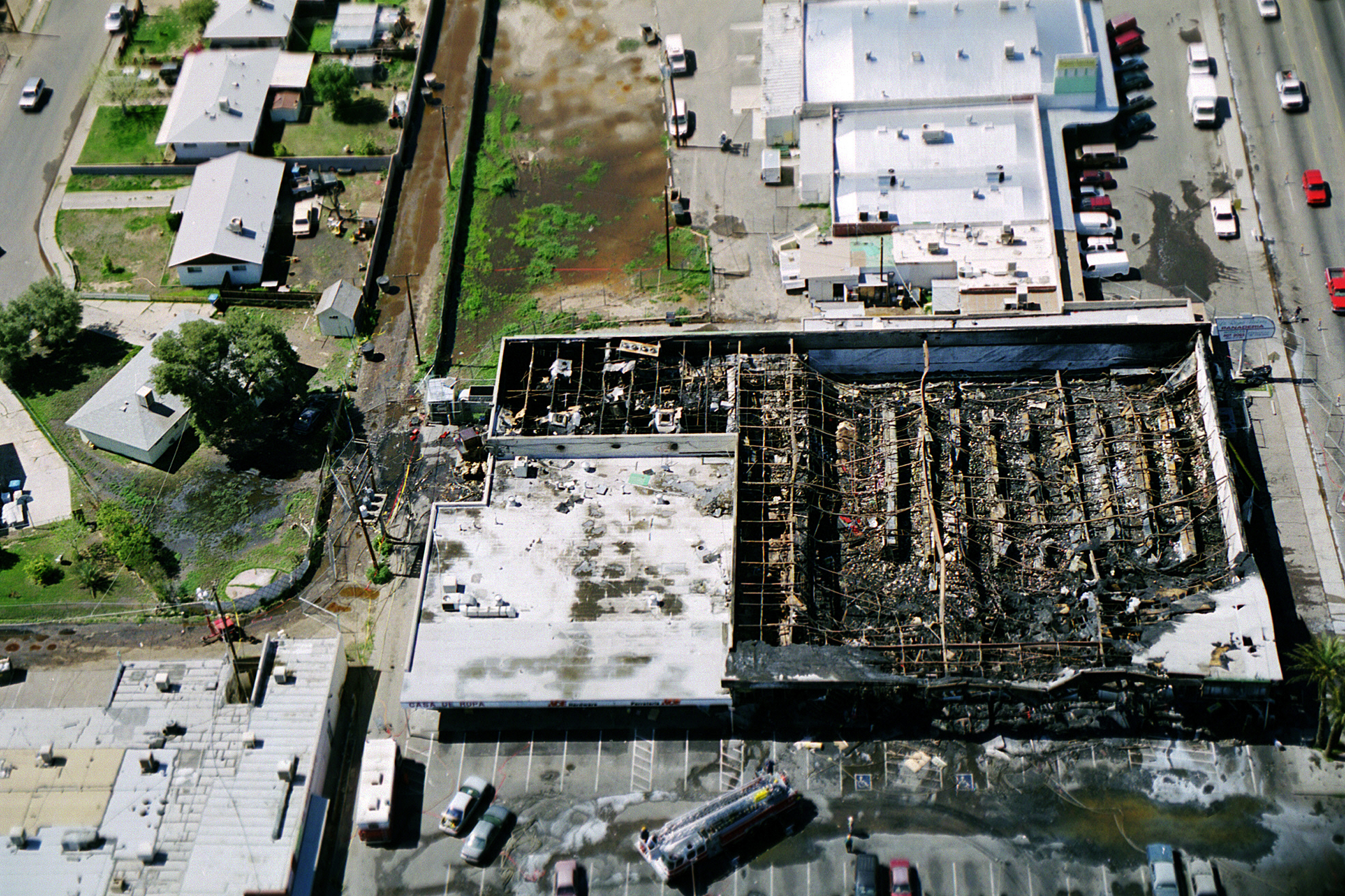
Today, we also know we must conduct fire attacks with the wind at our backs in windy conditions.
A Better, Safer Future
The PFD’s recovery process presented significant risks and required a unique type of courage. The department invested much time and effort into identifying what we had missed. We defined specific improvements to make the commercial fireground safer through more effective tactics. It’s clear that a vast majority of what we learned still matters.
Today, we have the benefit of everything we have learned in the past 20 years to bolster our knowledge and enable us to better manage fires similar to the Southwest Supermarket Fire. Compelling advancements in fire science, mayday research and effective fire-attack training have placed the American Fire Service in a stellar position to better serve our communities. I know this is everything Big Al wanted for us.
I am grateful for the staff and leadership at UL-FSRI, Don and Beverly Abbott and the Project Mayday team, and all grass-roots fire trainers who work to make us better. Their efforts have allowed me and other fire officers to become better at our jobs, make our communities safer and ultimately save lives.
References
1) NIOSH. “Death in the Line of Duty…A Summary of a NIOSH Fire Fighter Fatality Investigation.” Centers for Disease Control and Prevention, NIOSH, 25 July 2002, www.cdc.gov/niosh/fire/reports/face200113.html.
2) Phoenix Fire Department. “Final Report: Southwest Supermarket Fire.” Https://Www.phoenix.gov/Firesite/, Phoenix Fire Department, 12 Mar. 2002, www.phoenix.gov/firesite/Documents/072604.pdf.
3) Project Mayday. http://projectmayday.net
UL-FSRI Research
1) Kerber, Stephen. “Impact of Ventilation on Fire Behavior in Legacy and Contemporary Residential Construction.” UL-FSRI—Fire Safety Research Institute, 21 Aug. 2009, ulfirefightersafety.org/research-projects/impact-of-ventilation-on-fire-behavior-in-legacy-and-contemporary-residential-construction.html.
2) Kerber, Stephen. “Effectiveness of Fire SERVICE Vertical Ventilation and Suppression Tactics.” UL-FSRI—Fire Safety Research Institute, June 2013, fsri.org/research/effectiveness-fire-service-vertical-ventilation-and-suppression-tactics.
3) Madrzykowski, Daniel, et al. “Scientific Research for the Development of More Effective Tactics—Governors Island Experiments.” UL-FSRI—Fire Safety Research Institute, July 2012, ulfirefightersafety.org/research-projects/governors-island-experiments.html.
4) Weinschenk, Craig, et al. “Study of the Impact of Fire Attack Utilizing Interior and Exterior Streams on Firefighter Safety and Occupant Survival.” UL-FSRI—Fire Safety Research Institute, Dec. 2017, ulfirefightersafety.org/research-projects/impact-of-fire-attack-on-firefighter-safety-and-occupant-survival.html.
5) Weinschenk, Craig, et al. “Study of Coordinated Fire Attack Utilizing Acquired Structures.” UL-FSRI—Fire Safety Research Institute, Mar. 2020, ulfirefightersafety.org/research-projects/coordinated-fire-attack-utilizing-acquired-structures.html.
NIST Fire Behavior Research
1) Madrzykowski, Daniel, et al. “Fire Fighting Tactics Under Wind Driven Conditions: Laboratory Experiments.” National Institute of Standards and Technology, January 2009, https://tsapps.nist.gov/publication/get_pdf.cfm?pub_id=901104
2) Barowy, Adam, et al. (2012). “Simulation of the Dynamics of a Wind-Driven Fire in a Ranch-Style House —Texas.” National Institute for Standards and Technology, January 2012, https://tsapps.nist.gov/publication/get_pdf.cfm?pub_id=909779
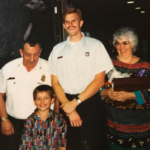
Chris Stewart was hired by the Phoenix Fire Department in 1991. He spent much of his career as a firefighter and company officer working on busy engine companies. As a chief officer, he worked across many divisions of the PFD. Chris retired from the department in September 2022 and is now a lead instructor for the Blue Card Hazard-Zone Incident Command Training & Certification Program. He serves on the technical panel for UL-FSRI’s “Study of Coordinated Fire Attack Utilizing Acquired Structures.” He has been appointed to represent Blue Card on the NFPA 1700 Technical Committee, “Fundamentals of Fire Control Within a Structure Utilizing Fire Dynamics.” In November 2022, Chris was appointed deputy chief of the Rio Verde Fire District, where he leads the operational response, training and customer service efforts for the fire district in this growing community. Chris is married to his high school sweetheart and has two sons attending Arizona State University.



